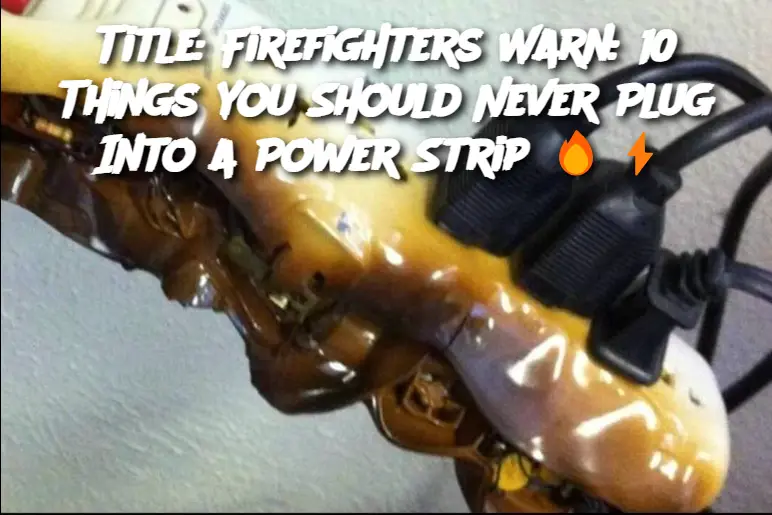- Why It’s Dangerous: Life-saving medical equipment like oxygen machines or CPAP machines should never be plugged into a power strip. These devices are crucial for health and safety, and using a power strip can result in power surges or failure.
- Firefighter’s Advice: Plug medical equipment directly into a wall outlet to ensure they receive consistent, uninterrupted power.
8. Computer Desktops and Laptops
- Why It’s Dangerous: While small devices like laptops may seem safe, desktops and monitors require significant power to operate. When plugged into a power strip with other devices, it can easily cause the strip to overheat.
- Firefighter’s Advice: Use a surge protector (not just a power strip) specifically designed for computers to protect them from electrical surges, and avoid overloading the strip.
9. Hair Dryers and Curling Irons
- Why It’s Dangerous: These personal care appliances are high-wattage and require significant power to operate. Plugging them into a power strip can overburden the strip, leading to a risk of overheating or fire.
- Firefighter’s Advice: Always plug hair dryers, curling irons, and other high-wattage appliances directly into a wall outlet.
10. Christmas Lights (or Any Decorative Lighting)
- Why It’s Dangerous: While it’s tempting to string multiple strands of Christmas lights or other decorative lighting on a single power strip, this can easily lead to overloading.
- Firefighter’s Advice: Always check the wattage limits of your power strip and make sure you don’t exceed it when using holiday or decorative lights.
General Firefighter Safety Tips for Power Strips:
- Don’t daisy-chain power strips: Never plug one power strip into another. This can easily lead to an overloaded circuit and increase the risk of fire.
- Use a surge protector: If you need to plug in sensitive electronics, like computers or TVs, always use a surge protector, which is designed to handle electrical surges and protect your devices from damage.
- Check the power strip rating: Ensure the power strip is rated for the electrical load you plan to use. If you’re unsure, don’t overload it.
- Inspect power strips regularly: Check power strips for signs of wear, frayed cords, or burn marks. If you notice any, replace the power strip immediately.
- Never leave power strips plugged in when not in use: Unplugging unused power strips helps avoid potential fire hazards.
Conclusion:
While power strips are convenient, it’s crucial to understand their limitations. Plugging high-power devices like space heaters, microwaves, or refrigerators into a power strip can lead to overloading, overheating, and serious fire hazards. Always follow the guidelines above, and use power strips and surge protectors responsibly to keep your home safe. By making informed decisions about what you plug in, you can avoid accidents and ensure a safer living space for you and your family. 🔌
continued on next page
